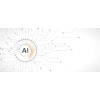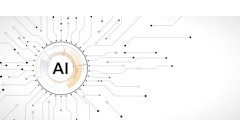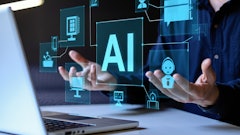
Artificial intelligence (AI), particularly generative AI (Gen AI), has ignited a whirlwind of excitement, speculation and the promise of transformative capabilities. However, the chasm between the hype and tangible, practical applications remains significant, particularly within the realm of procurement and supply chain. To truly harness the power of AI, we need to move beyond the abstract and embrace a realistic, grounded approach, recognizing its limitations and the critical role of human intelligence.
The allure of AI as a panacea for all business challenges is exciting, but ultimately misleading. AI is a tool, not a magic wand. It excels at specific tasks, such as pattern recognition, data analysis, and automation, but it cannot replicate the nuanced judgment, strategic thinking, and ethical considerations found in human decision-making. A successful AI implementation requires a symbiotic relationship between artificial and human intelligence, leveraging the strengths of each to achieve optimal outcomes.
There are critical considerations for effectively deploying AI solutions within procurement and supply chain, moving beyond the hype to uncover practical applications. Here’s how to match AI capabilities to the specific complexities of procurement tasks, from automating transactional processes to augmenting strategic decision-making.
Considerations for how to best deploy AI solutions
The power of Gen AI for procurement organizations lies in both the strategy and implementation.
● AI can handle complex data analysis and decision-making, but its effectiveness is often contingent on the complexity of the process. Simple, rule-based tasks can be easily automated, while complex, multi-faceted tasks involving judgement-based decision making require AI solutions involving deep learning, data learning abilities often with human oversight.
● AI is particularly effective at automating repetitive, transactional tasks, freeing up human resources for more strategic initiatives. For example, AI can streamline invoice processing, contract management, and supplier onboarding, allowing procurement professionals to focus on strategic sourcing, risk management, and innovation.
● Procurement decisions often involve multiple variables, such as price, quality, delivery time, and supplier risk. AI excels at analyzing these multivariate relationships, identifying patterns and correlations that might be missed by human analysts. However, for decisions based on a single, easily quantifiable variable, simpler, non-AI solutions might suffice.
● AI is best suited for repeatable processes that involve consistent patterns and data. One-off, ad-hoc tasks are less suitable for AI implementation, as the upfront investment in development and training might outweigh the potential benefits.
● Some procurement challenges require bespoke AI solutions tailored to specific needs, while others can be addressed with off-the-shelf AI tools. The choice depends on the following:
○ How complex is the process;
○ How predictable is the outcome;
○ How standardized is the process both within and across organizations (more standardized the process, easier it is for solution providers to build plug and play tools requiring minimal customization); and finally
○ Organization’s technology strategy (best of breed solutions from market for every problem vs. one unified but custom approach).
Practical uses of AI in procurement and supply chain
By applying this framework, here are several key procurement areas where AI can deliver significant value. Some concrete examples include:
1. Market intelligence. AI-powered tools can analyze vast amounts of market data, including news articles, social media feeds, and industry reports, to identify emerging trends, predict price fluctuations, and assess supplier risk. This enables procurement professionals to make more informed sourcing decisions and mitigate potential disruptions. For example, procurement teams can use Gen AI to monitor global commodity prices and identify potential supply chain vulnerabilities based on geopolitical events.
2. Procurement intake. AI can automate the first interaction of the user with procurement with not only automating but optimizing intake process. Leveraging techniques like natural language processing (NLP), it can extract relevant information from unstructured data, such as emails and documents, streamlining the intake process, ensuring usage of optimal buying channels and reducing manual efforts as well as errors. AI-powered chatbots can also answer common procurement questions, freeing up procurement staff to focus on more complex tasks.
3. Procurement analytics. AI can effectively analyze voluminous procurement data coming from diverse data sources to identify cost-saving opportunities, optimize inventory levels, and improve supplier performance. Machine learning algorithms can identify patterns and anomalies in spend data, highlighting areas for improvement. Predictive analytics can forecast future demand and identify potential supply chain bottlenecks, enabling proactive risk management.
For instance, AI can be used to create spend dashboards that clearly highlight where money is being spent, and what contracts are up for renewal.
4. Contract management. AI can automate the process of contract analysis, flagging key clauses, and ensuring compliance. NLP can be used to extract relevant information from contracts, such as payment terms, delivery schedules, and performance metrics, enabling efficient contract management. AI can also be used to monitor contract performance and identify potential breaches.
5. Supplier risk management. AI can analyze supplier data from various sources, including financial reports, credit ratings, and news articles, to assess supplier risk. Machine learning algorithms can identify patterns and correlations that indicate potential financial distress, quality issues, or ethical concerns. This enables procurement professionals to proactively mitigate supplier risk and ensure supply chain resilience.
Looking ahead
The key to successful AI implementation lies in a pragmatic approach that combines technological prowess with human expertise. We must recognize that AI is not a replacement for human judgment, but rather a powerful tool that can augment human capabilities. By applying a structured framework and focusing on practical use cases, we can unlock the true potential of AI in procurement and supply chain, driving efficiency, innovation, and strategic advantage.
The path to realizing the benefits of AI in procurement and supply chain requires a shift from hype to practicality. Adopting a grounded approach, leveraging key considerations, and fostering collaboration between humans and machines can transform procurement into a data-driven, strategic function that delivers tangible and sustainable results for the business.



















![Pros To Know 2026 [color]](https://img.sdcexec.com/mindful/acbm/workspaces/default/uploads/2025/08/prostoknow-2026-color.mduFvhpgMk.png?ar=16%3A9&auto=format%2Ccompress&bg=fff&fill-color=fff&fit=fill&h=135&q=70&w=240)